Dear family, friends, customers and future customers.
The month of October not only ushers in seasonal changes but also brings us closer to the joyous holiday season. This issue of Start Healthy dives into a wide range of topics to help enrich your experience during this time of year, including the great benefits of cultivating intergenerational relationships, navigating the intricate process of joint finances, and much more.
Friendship is a force that unites us, enabling profound connections and deep understanding. The same is true of intergenerational relationships, whose potential goes beyond what we may typically expect. Inside, discover the transformative benefits these friendships can provide to the young and the old alike.
Salads are a staple lunch for many people because they’re incredibly versatile and often packed full of flavor. This issue offers two delicious vegan salad recipes—a lemon pesto lentil salad and a roasted cauliflower salad—you’re not going to want to miss.
Believe it or not, your grip strength has a huge influence on your ability to do daily tasks, from grasping a steaming cup of coffee to crafting a heartfelt letter to a loved one. Be sure to read the article inside to learn more about the overall importance of grip strength and what exercises you can do to improve it.
Though merging finances can be a benefit to your relationship, embarking on the journey of doing so can be daunting. The enclosed guide offers strategies to help make the process a little easier, allowing you to develop better financial harmony.
Here’s to having a healthy season! As always, it’s a pleasure to send you this magazine.
Interpersonal relationships lie at the heart of the human experience. Interacting with others and forging new connections brings a whole host of benefits, especially across generations. Bonds between younger and older people within their families and communities enable each to view the world from diverse perspectives, providing them with a chance to develop mentally and emotionally and stay engaged no matter their age. Whether the relationship is biological, a mentorship, or a friendship, everyone can reap the rewards of these connections.

Intergenerational relationships have a remarkable and lasting effect on children, shaping their lives in ways that extend beyond the immediate family. By being exposed to older people, they can learn valuable lessons, become more understanding and accepting of the aging process, and appreciate the bigger picture of life.
Provide guidance and support
Thanks to their experience and earned wisdom, older adults can help kids build life skills such as resilience, discover how to behave socially, and develop a sense of morality. Besides parents, grandparents in particular can play an important role in the emotional development of their grandchildren. By providing them a safe and loving environment, encouraging them to express their feelings and try new things, and celebrating their accomplishments, they can assist their grandchildren in growing into confident, empathetic, and well-rounded individuals.
Create stability
Time and time again, studies have shown that close relationships between older adults and children are essential for their development. Parents, grandparents, and other caregivers like teachers can provide love, support, and guidance, which can help children develop coping and problem-solving skills and the ability to make good choices. These steadfast relationships can be especially beneficial during times of stress and adversity.
Establish role models
Because children learn through example, seeing how the older people in their lives, including parents, grandparents, and family friends, care for each other will show them how to treat their own loved ones as they grow up. It’s an opportunity for them to witness patience, tolerance, and empathy and learn how to give their loved ones the kindness, unconditional love, and support they deserve.

Interacting with young people can improve an older person’s mental and physical well-being and foster their sense of purpose and satisfaction in numerous ways.
Build family connections
When families participate in activities that everyone can enjoy, such as sharing a meal or playing games in the park or backyard, it brings everyone together, setting the stage for open, honest discussions that can break down barriers and stereotypes and instill respect. These interactions bring about a deeper understanding between individuals of all ages and allow them to feel connected to something far greater than themselves.
Foster better health
Research demonstrates that social contact helps decrease an older adult’s chances of developing Alzheimer’s disease and dementia, bolster heart health, lower the chances of depression due to isolation, and lessen stress. Moreover, increased sociability reduces inflammation, improving their overall health.
Reduce societal discrimination
Because the older population is outliving their predecessors, they’re remaining strong and vibrant and continuing to give back to the community for longer. However, while the elderly are respected and revered in many cultures, they are unfortunately regarded as weak and unimportant in others. Connections between youth and seniors enable them to see the other’s perspective better and gain a deeper appreciation for one another, which can help unite members of the community, reduce age-discriminatory behaviors, and improve seniors’ stature and role in society.

Leave a meaningful legacy
By forging strong bonds through the generations, elders have a chance to create a lasting, impactful impression on younger individuals, especially within their families. Building these connections gives them a way to share their knowledge of their cultural heritage and pass on wisdom from a life well-lived, allowing their memory to live on long after they’re gone.
Ultimately, experiencing love and a sense of belonging is the driving force for creating intergenerational connections. Such relationships allow people of all ages to feel appreciated, listened to, and recognized. And that’s an impact that can last a lifetime.
With its shifting weather, dancing leaves, and evolving colors, autumn is a time of enchantment and transformation. Immerse yourself in the richness of the season by savoring the flavors of these two nourishing and robust vegan salads from The Clean Vegan Cookbook that are the perfect complement to fall’s beauty.
This refreshing and flavorful salad features a vibrant combination of olives and sun-dried tomatoes tossed with tender green lentils, lacinato kale, and a zesty lemon pesto vinaigrette you’re not going to want to miss.
Indulge in the delectable flavors of this roasted cauliflower salad, which brings together Medjool dates and a creamy tahini sauce for an exquisite blend of savory and sweet.

Reprinted with permission from The Clean Vegan Cookbook by Jackie Akerberg. Page Street Publishing Co. 2023. Photo credit: Jackie Akerberg.
recipe by jackie akerberg
photos by jackie akerberg
There is nothing better than fresh pesto: pesto flatbreads, pesto pasta, pesto-roasted veggies, you name it! So I thought, Why not turn my favorite sauce into a vibrant, lemony vinaigrette? I’m glad I did, because this pesto is the besto. It combines the garlicky, herby, umami flavor of pesto with the brightness of lemon juice and red wine vinegar for a perfectly balanced vinaigrette to top these tender lentils and veggies.
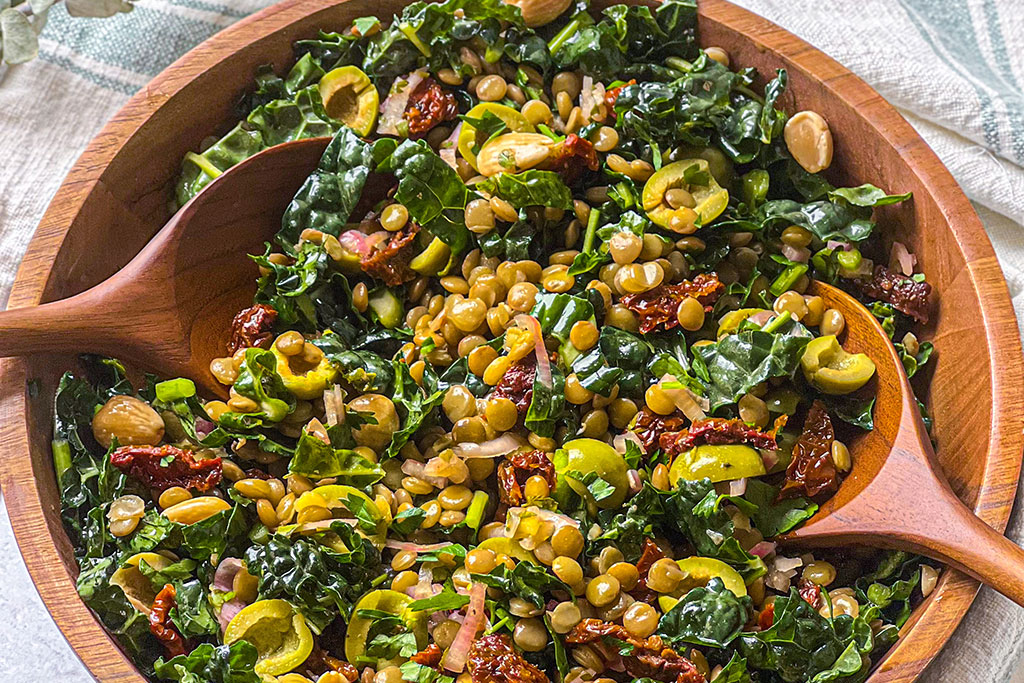
Yields: 4 servings
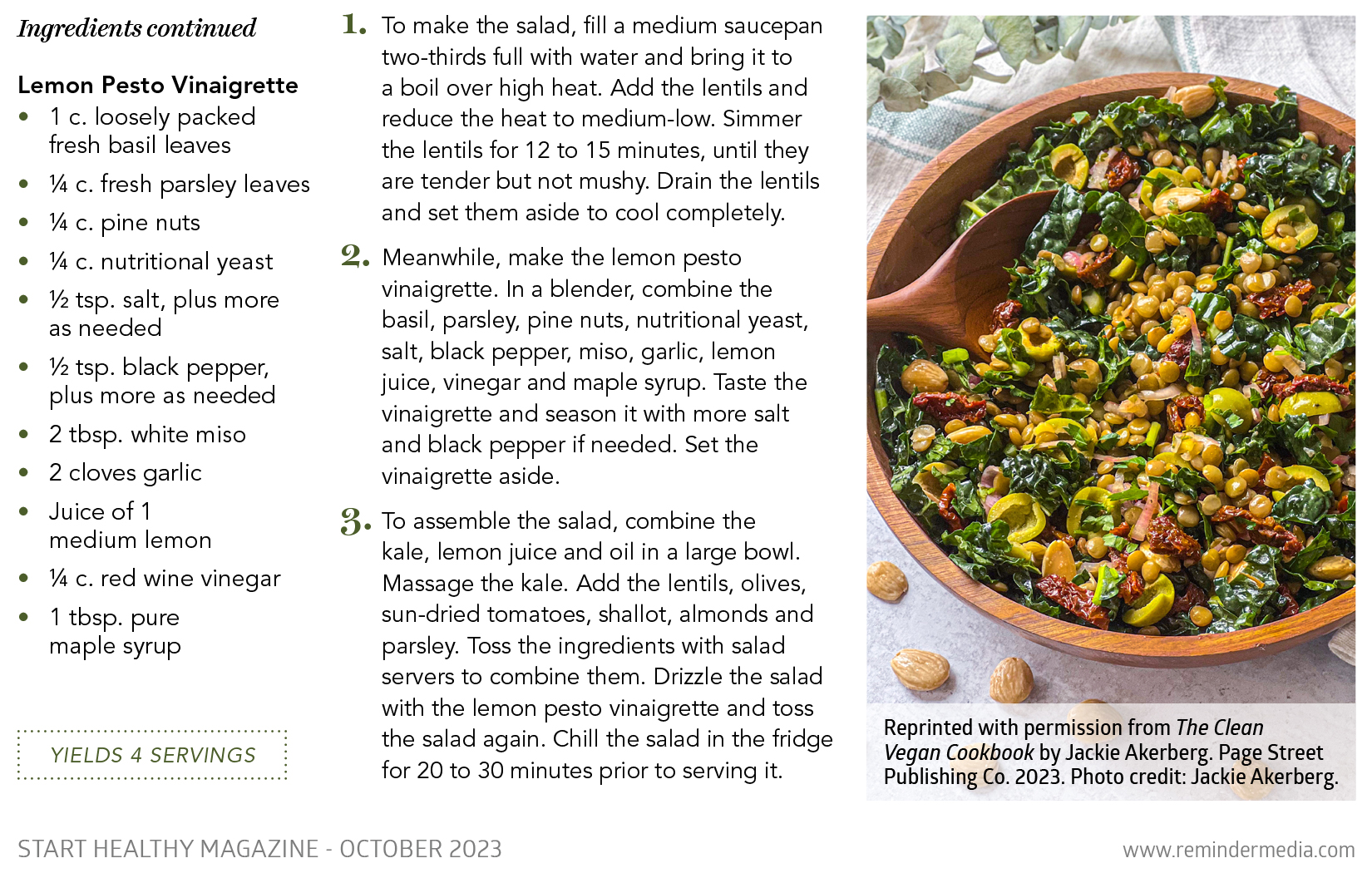


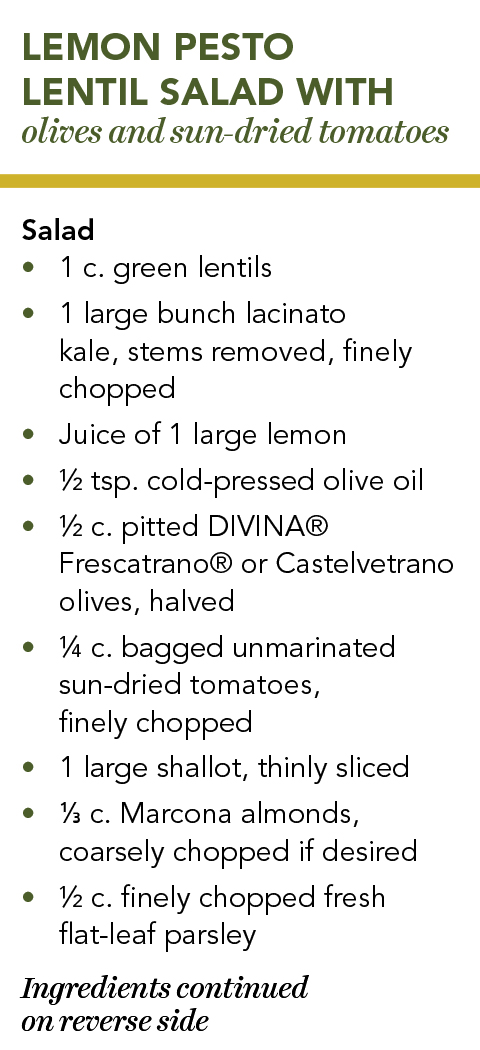
recipe by jackie akerberg
photos by jackie akerberg
A roasted vegetable salad is the perfect meal for any time of year, but it’s especially delightful in the cooler months when you’re craving a big bowl of veggies but also want something cozy and warm. This salad is both healthy and comforting. Savory roasted cauliflower florets meet tiny bits of sweet crystalized dates for a flavor explosion. The creamy tahini sauce is my go-to sauce for many things, and it complements this bowl perfectly.

Yields: 4 servings
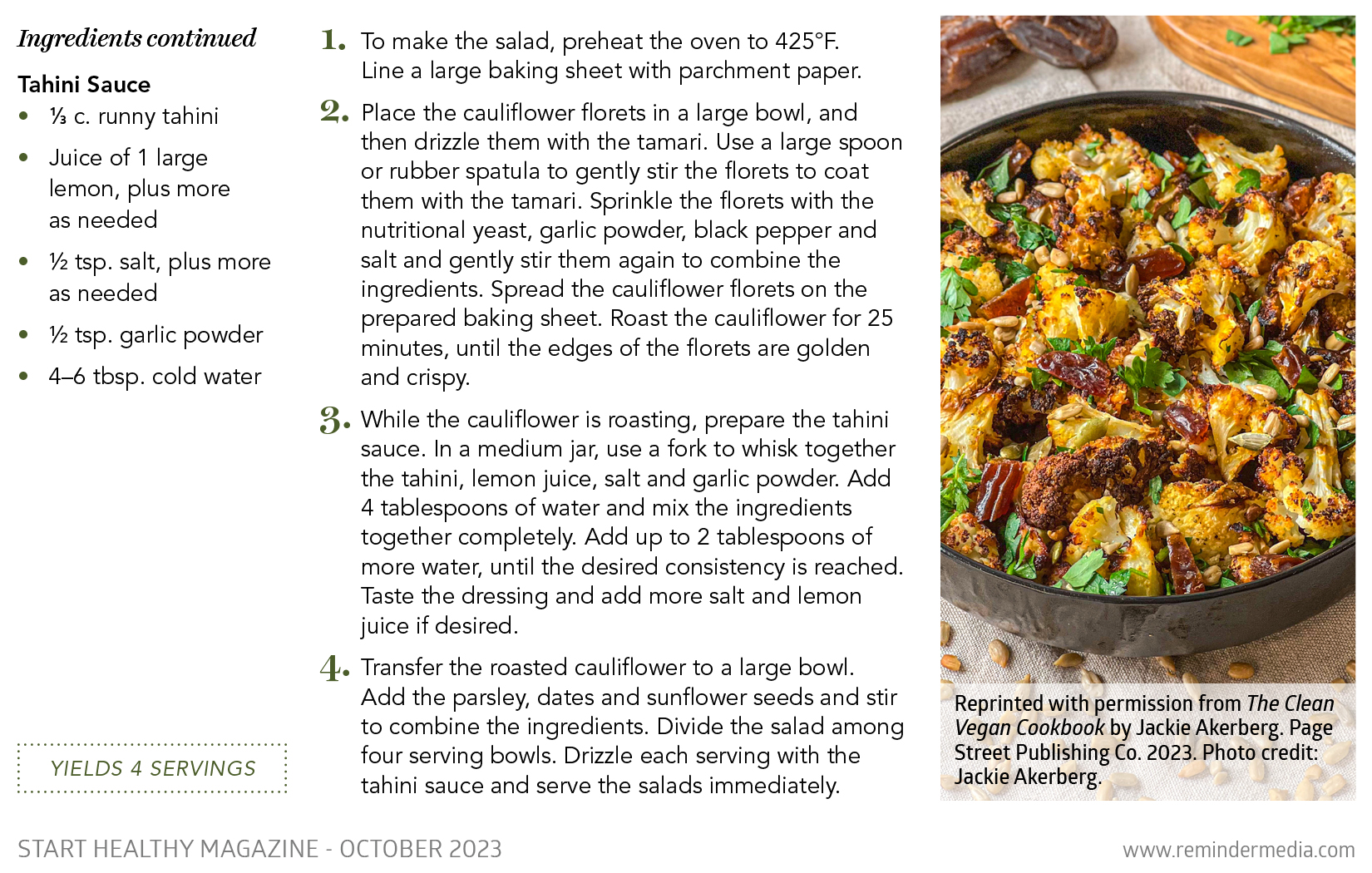


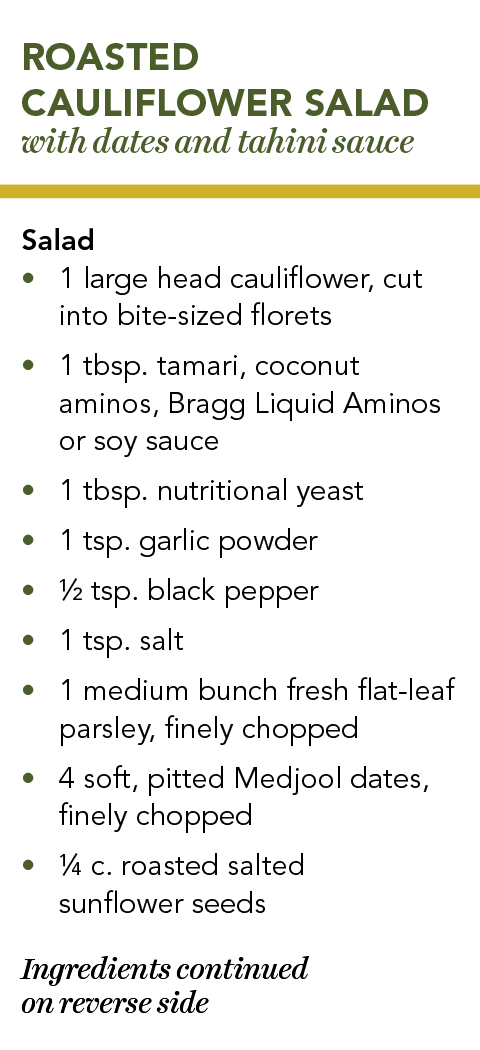
Almost nothing determines your physical capabilities as much as your handgrip. It’s what enables you to grab, hold, squeeze, pinch, lift, and support all sorts of items. Without a strong grip, fine motor skills such as writing with a pen or carrying a glass of water can be challenging. You may even find yourself spontaneously dropping objects or feeling incapable of moving them at all. But grip strength isn’t static—with a basic understanding and a few tips, you can improve it and, in turn, numerous aspects of your daily life.

Believe it or not, a strong grip requires more than having tough hands. To make grip actions, your body relies on a surprisingly broad system of muscles, borrowing force from the extensor muscles of your forearm. If you take steps to develop these many points of power, you can noticeably enhance your grip.
Strength in these muscles also carries surprising links to your overall wellness. “Many studies suggest that grip strength has a direct correlation to shoulder health and cardiovascular health,” says physical therapist and personal trainer Sydney Young, DPT. At OutFitness, her Austin, Texas gym, Young uses grip as a key strength indicator for her clients. “If we train strength in these motions specifically, we can boost wellness and avoid injury,” she explains.
In other words, just as a solid grip helps you keep your glassware safe, it can also protect your health in both the short term and long term. After all, dropping equipment is a common cause of workout injuries, and given the number of gym exercises that require suspending or even swinging heavy weights, a tight, resilient hold is paramount to exercising safely.
For this reason, Young intentionally works grip exercises into her clients’ fitness rotations, particularly if their goals are to get stronger and fitter. “In terms of fitness, we often see decreased grip strength hindering strength training due to an inability to lift heavier weights,” she notes. “A good example of this is the dead lift. This exercise is supposed to train the posterior chain—the hamstrings, glutes, and back muscles—but typically grip strength fails before any of these muscle groups. Improving it will allow you to increase the weight on the barbell and strengthen your posterior chain.” In other words, no matter your fitness goals, whether you want to preserve muscle mass or achieve a ripped physique, cultivating a powerful grip should be a top priority.

So how firm is your grip? Try Young’s recommendation: “A great test is to lift a kettlebell with each hand and hold them for thirty seconds to a minute. You can objectively track your progress by retesting weekly or monthly, gradually increasing the weight or the duration of your hold.”
For a detailed, quantifiable way to measure your grip strength, try using a handgrip dynamometer, which you can either purchase yourself or borrow while visiting your local fitness center. If you have serious concerns about loss of or subpar grip strength, Young recommends visiting a physical therapist to gauge your capabilities against normal figures for your sex, age, and other factors.
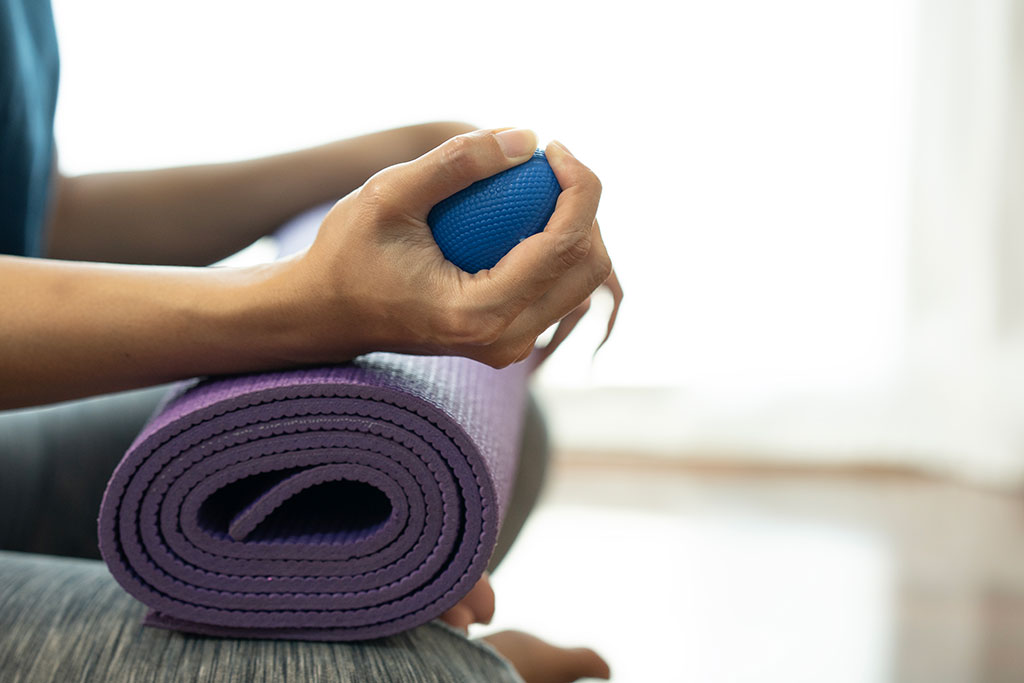
Even if you aren’t currently worried about your grip, you can’t go wrong investing in self-improvement. Try one of Young’s most trusted exercises for improving grip strength: the farmer’s carry. “Hold kettlebells in each hand for a set amount of time,” she explains. “To make this harder, you can walk and do laps. You can also use a ‘pinch grip’ to grab barbell plates, which will work different muscles.” Check out the printable at the bottom of this page for a handy outline of this exercise so you can easily work it into your standard fitness routine.
However, you don’t need a gym membership to train these muscles regularly. “For folks with no access to equipment, you can do at-home exercises such as squeezing a stress ball, or any kind of ball, to increase grip strength,” Young says. “I would recommend ten reps of a ten-second hold each.” With dedication and practice, you can make noticeable improvements in your grip, including better strength and longer endurance.
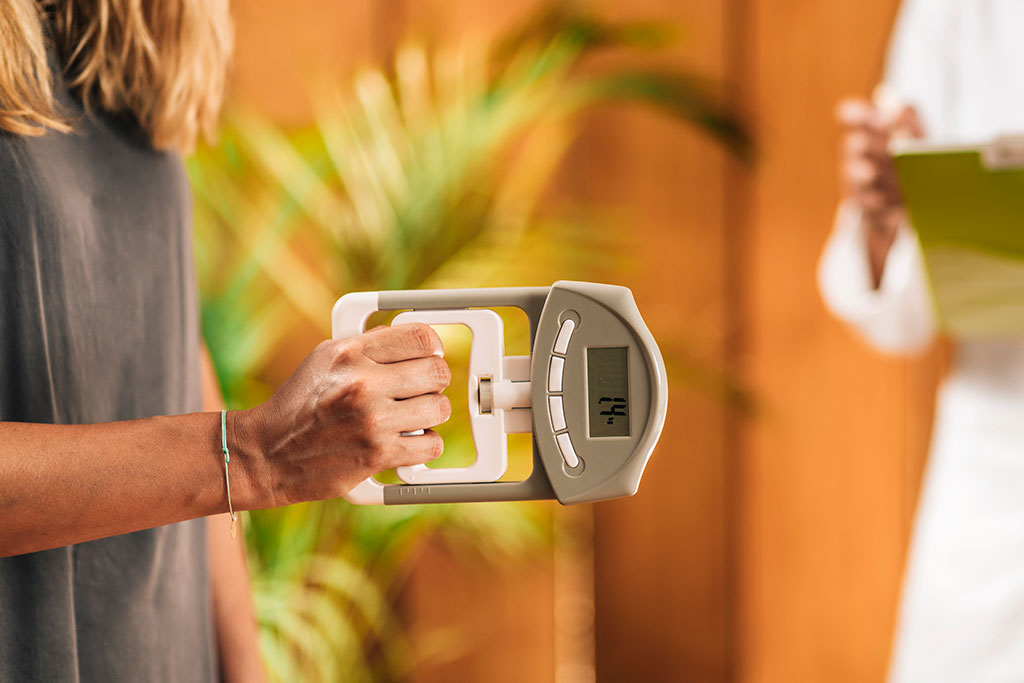
For some people, unfortunately, medical intervention is the only surefire solution for improving grip strength. Conditions such as arthritis, carpal tunnel syndrome, and pinched nerves can affect your grip, especially if you experience related symptoms like finger numbness or a burning sensation throughout your hands or fingers. Weight training alone is unlikely to reverse these issues, cure hand and wrist diseases, or improve grip strength. But with a physician’s help, you can grab onto life and squeeze like you mean it.
*Always consult your doctor for questions about your health or before beginning a new exercise routine.
Money isn’t always the easiest topic to discuss, especially since everyone has different perspectives on budgeting, saving, and investing. But when merging your finances with your partner’s, it’s important to be transparent and enter the experience with an open mind. If you’re considering starting the journey toward joining your finances, this guide can help you navigate the process effectively and with more confidence.

Throughout the entire process of combining finances, it’s crucial to have open and honest communication with your partner. Start by discussing your individual financial situations, including income, debts, assets, existing accounts, and overall financial goals. This dialogue will help you each better understand the other person’s current financial status and expectations, allowing you to identify and work through any possible concerns sooner rather than later and establish a shared vision for your financial future. Then, as you move forward, conduct regular check-ins with each other to ensure that you’re staying on track and alleviate any new issues that may arise.

As part of your communication, you’ll want to identify your financial goals both as individuals and as a team. These should include short- and long-term objectives, such as saving for a down payment on a house, paying off student loans, planning for retirement, or pursuing a shared dream like starting a business or traveling the world. Aligning your goals and making them clear and achievable will provide a road map for your future financial decisions and keep you both motivated to continually work together to meet them.

There are various approaches to managing joint finances, so it’s important to determine which one will work best for you and your current situation.
Total combination
This system involves combining all your individual bank accounts into one joint account. Though getting everything shifted may take some extra time and effort, it can ultimately simplify your financial management since most, if not all, of your payments would come out of this single account. You’d also have joint credit and debit cards, which would create more transparency by letting each person see where the money is going every month.
Proportional contributions
With this method, you would each contribute to a joint account a set percentage of your paychecks that’s proportional to your individual income. If you or your partner makes substantially more than the other, this could be a good option as it can help ensure that one of you isn’t giving more than you can reasonably afford. You would also each maintain your own personal accounts separate from the joint one, which can allow for more financial autonomy and independence.
Equal contributions
Similar to the proportional method, this approach entails maintaining individual accounts as well as a joint account. However, you would each contribute the same amount to the shared account every month to use on shared expenses such as the mortgage or rent, insurance, and groceries. This approach can work well if you have similar incomes and debts since it would prevent one person from contributing a disproportionate amount.

Developing a budget together is an integral part of merging finances, no matter what system you choose. By budgeting, you can better track your monthly income and your spending, enabling you both to understand where the money is coming from and where it’s going. To create a budget that works for each of you, start by first identifying your essential monthly expenses, which may include rent or mortgage, utilities, groceries, debt repayments, investments, and insurance. Once you have that general number in mind, you can then decide how much you want to save or set aside for your emergency fund based on your financial goals. Finally, allocate funds for discretionary spending, like entertainment, date nights, or other shopping.
After your budget is set, determine how you will handle your finances each month. For instance, one of you could take on the responsibility of managing deadlines and making payments while the other balances the checkbook, regularly reviewing your accounts and your spending habits to ensure you’re staying within budget. You could also trade off tasks or make them shared activities. Consider conducting a biweekly or monthly check-in where you sit down together to go over your finances and see how well you are sticking to your established budget.
Throughout the entire process of merging finances, be sure to keep your short- and long-term financial goals in mind so you can each have a clear idea of what you’re working toward and saving for each month. You should also regularly review and adjust your budget or financial system to accommodate changing circumstances, such as a new job opportunity. This periodic evaluation and open communication can help ensure that your strategy remains aligned with your evolving needs and aspirations as a couple, leading to a stronger financial future.








